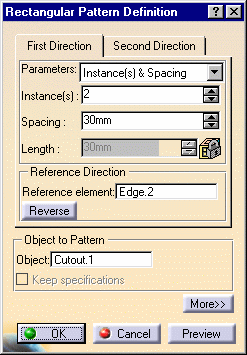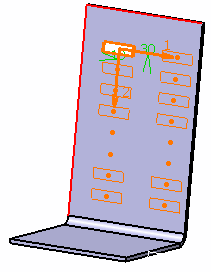These features make the creation process easier.
- cutouts
- holes
- beads
- flanges
- flanged holes
- stamps (except stiffening ribs)
- Aerospace Sheetmetal Design patterns
These features must lie on a unique and planar surface.
-
Select the rectangular cutout you want to duplicate.
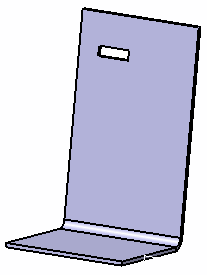
-

The Rectangular Pattern Definition dialog box is displayed. Each tab is dedicated to a direction to define the location of the duplicated feature. -
Set the specification for the First Direction by selecting the first edge (Edge.2) as shown, to specify the first direction of creation.
An arrow is displayed on the flange. The Reverse button enables to modify the direction.
You can also click the arrow in the 3D geometry. -
Keep the Instances & Spacing options to define the parameters.
-
Enter 2 as the number of instances you wish to obtain in the first direction.
-
Define the spacing along the grid: enter 30mm.

Defining the spacing along the grid and the length of your choice, would make the application compute the number of possible instances and space them at equal distances. -
Now, click the Second Direction tab to define the other parameters.

Note that defining a second direction is not compulsory. Creating a rectangular pattern defining only one direction is possible. -
Select the second edge (Edge.3), as shown, to define the second direction.
-
Keep the Instances & Spacing option: enter 8 and 10 mm in the appropriate fields.
Additional cutouts have been aligned along this second direction. 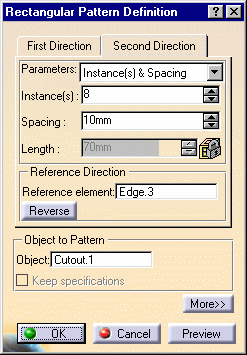
-
Click OK to repeat the cutouts.
After the update, the part looks like this: 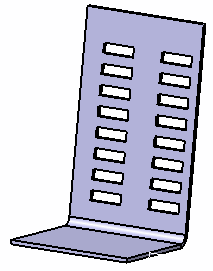
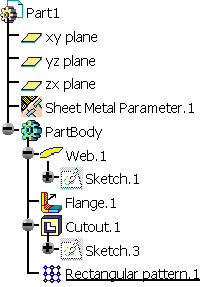
-
Click Unfold
 .
.The pattern is updated on the unfolded view. 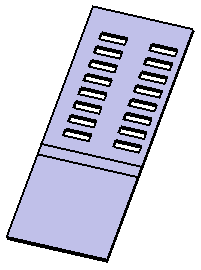
-
Click the More>> button to display further options.
![]()
